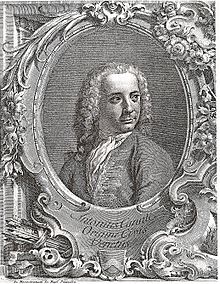Canaletto
| Canaletto | |
|---|---|
 |
|
| Born |
Giovanni Antonio Canal 18 October 1697 Venice, Republic of Venice |
| Died | 19 April 1768 (aged 70) Venice, Republic of Venice (now Italy) |
| Nationality | Venetian |
| Education | Luca Carlevaris |
| Known for | Landscape art, etching |
| Patron(s) |
Owen Swiny Joseph Smith |
Giovanni Antonio Canal (18 October 1697 – 19 April 1768), better known as Canaletto (Italian: [kanaˈletto]), was an Italian painter of city views or vedute, of Venice. He also painted imaginary views (referred to as capricci), although the demarcation in his works between the real and the imaginary is never quite clearcut. He was further an important printmaker using the etching technique. In the period from 1746 to 1756 he worked in England where he created many sights of London. He was highly successful in England, thanks to the British merchant and connoisseur Joseph Smith, whose large collection of Canaletto's works was sold to King George III in 1762.
He was born in Venice as the son of the painter Bernardo Canal, hence his mononym Canaletto ("little Canal"), and Artemisia Barbieri. Canaletto served his apprenticeship with his father and his brother. He began in his father's occupation, that of a theatrical scene painter. Canaletto was inspired by the Roman vedutista Giovanni Paolo Pannini, and started painting the daily life of the city and its people.
After returning from Rome in 1719, he began painting in his topographical style. His first known signed and dated work is Architectural Capriccio (1723, Milan, in a private collection). Studying with the older Luca Carlevarijs, a moderately-talented painter of urban cityscapes, he rapidly became his master's equal.
In 1725, the painter Alessandro Marchesini, who was also the buyer for the Lucchese art collector Stefano Conti, had inquired about buying two more 'views of Venice', when the agent urged him to consider instead the work of "Antonio Canale... it is like Carlevaris, but you can see the sun shining in it."
Much of Canaletto's early artwork was painted "from nature", differing from the then customary practice of completing paintings in the studio. Some of his later works do revert to this custom, as suggested by the tendency for distant figures to be painted as blobs of colour – an effect produced by using a camera obscura, which blurs farther-away objects.
...
Wikipedia
